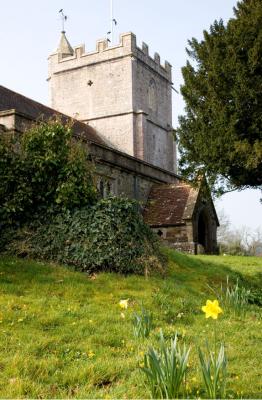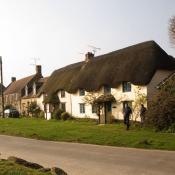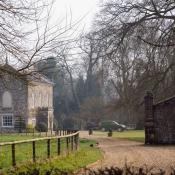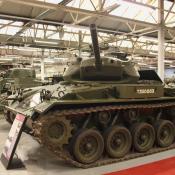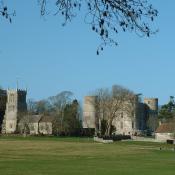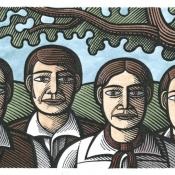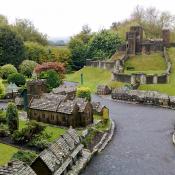
Wool today is mainly modern and scattered, but there are a few remaining historic buildings. The 17th century gabled Woolbridge Manor House, stands beside the River Frome. This was where “Tess of the d’Urbevilles” spent her honeymoon in Hardy’s novel of that name. Next to the house is a 15th century bridge two, which contains recesses for walkers.
In 1384 Wool Chapel was dedicated to the Holy Rood and continued as a parochial chapel, belonging to neighbouring Coombe Keynes until 1844, when Wool became a separate parish. The original church is believed to have consisted of just a nave and the chancel and tower were added around the middle of the 15th century. In 1865 most of the church, apart from the tower and the north and east walls of the nave, was demolished so that a south aisle could be constructed. This extended the by twelve feet.
Interestingly, the new extension included the ancient burial place of the Turberville family of Wool Bridge. If this name is vaguely familiar perhaps it is because the small village’s main claim to fame is that it was used by Thomas Hardy in his novel, “Tess of the d’Urbervilles”, as the seat of the d'Urberville family – only a slight adjustment to that name!
Not far away are the remains of Bindon Abbey, which was founded in the 12th century by the Cistercians. The Abbey closed with the dissolution of the monasteries in 1539 and most of the building was destroyed by fire just over a century later. Lulworth Castle was built from much of the stone of the Abbey. Visitors may be interesting in the empty, open coffin of Abbot Richard de Maners, which lies amongst the low ruins. It was here that sleepwalking Angel Clare carried Tess in Hardy’s novel.
Wool is close to the main London railway line. It is a small village with only a few shops and eating places. However there is plenty of accommodation around this area. Local places of interest include the Tank Museum at Bovington and Monkey World. There are also various castles in the area, such as the historic Corfe Castle

